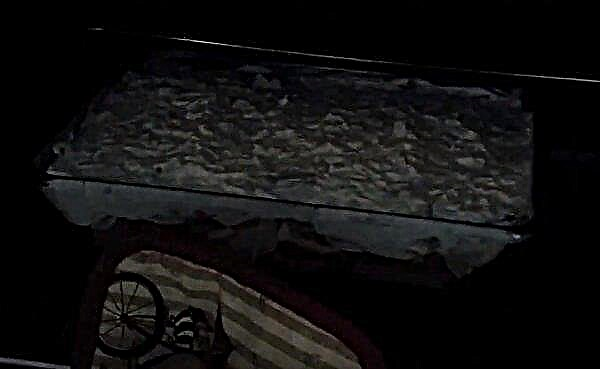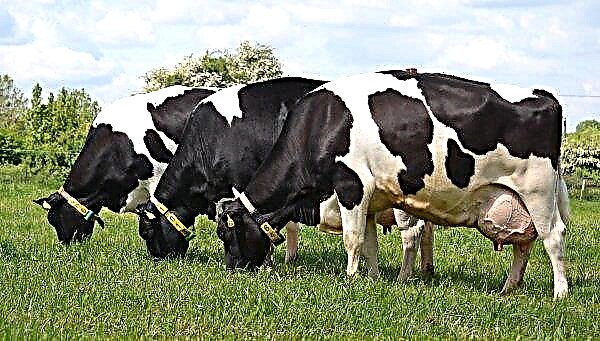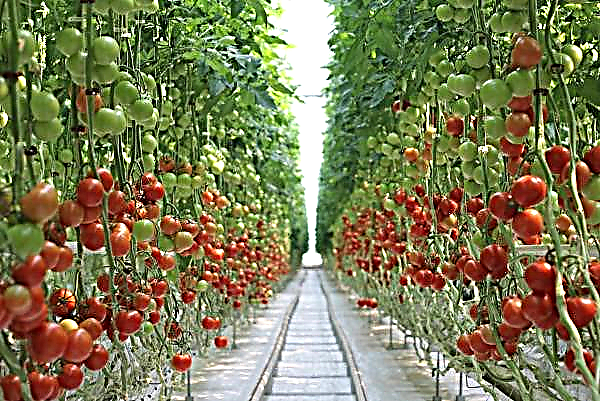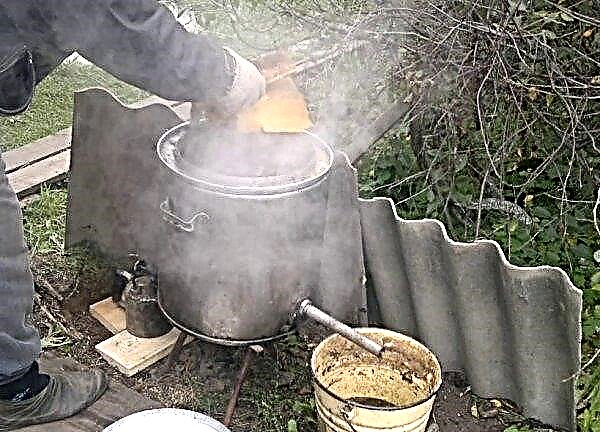One of the events at the opening of the summer season is the creation of paths in the garden and in the garden. Many summer residents turn their attention to old tires as a building material. Types of such home-made tracks and instructions for their manufacture later in the article.
Options for paths from old tires
Most summer residents are owners of a personal car. Over time, old tires accumulate, they need to be taken for recycling. But folk craftsmen find other, more rational use of material. From the tires they make paths in the garden and between the beds, various installations and much more. The location of the path and its shape mostly depend on the topography of the garden.
Ribbons
The tape version is suitable for both wide and narrow paths: for example, for paths leading from the house to the garden, or at the border of the garden and the garden zone, between the beds. In this case, the sidewall is cut from the tires, and the tire itself is cut across in one place - a tape is obtained. Width is regulated by the number of folded along the strips.
Did you know? The reason for creating pneumatic bicycle tires was a headache. The inventor of air-filled tires was John Dunlop, who suffered from migraines after every walk on metal rims.
Usually they are nailed to a wooden base so that they are held in one piece. Under the tape you need to make a base: dig a shallow recess and cover it with fine gravel. This will help her stay and not move out after precipitation.
Video: garden paths from old car tires
Stairs
The summer cottage may have uneven terrain or be located on a slope. In this case, the use of whole tires will be rational. They are dug into the ground for stability, forming a ladder. They always advance from the bottom up. The emptiness of the rubber steps is filled with sand or soil, a layer of gravel or pebble is preferably placed on top. The stairs will be convenient to walk even in wet weather or after rain. Separately, you can think about arranging the railing - for example, from the remaining wooden bars after the construction.
Rubber plates
Old tires from the truck have a large area, from which plates can be made. The first step is to cut the tape, and then of them equal in size pieces of square or rectangular shape. The track from the plates can be made of a mosaic type, painted in different colors. The slots between the plates are left intentionally wideFill them with colorful pebbles. The border for a decorative path can be made of reinforcement dug in the ground by an arc, as well as of large stone.
Important! To create smooth paintings from car tires, you need to take material with uniform tread wear.
Making a tire track
If you are not a happy owner of a car, you can contact the car repair shop for material. Depending on the chosen option, the paths are selected and tires. For wide strips, it is better to use material from trucks, for steps - the same size. The multi-caliber composition is suitable for the tiled type, anyway it will have to be cut.
Layout of tracks
The first stage of any construction is planning. You need to estimate the approximate amount of required raw materials, based on the width, length and number of paths in the country. Then you should draw a layout on paper, mark all sizes. Be sure to consider future decor, such as lights. It is also necessary to consider combining paths with drainage and irrigation systems in the garden and the vegetable garden.
Necessary materials and tools
So, the necessary tires are selected and brought, all calculations are prepared.
Did you know? The largest tires were manufactured by Bridgestone for the BelAZ dump truck. Their weight is 5.5 tons and a diameter of more than 4 meters.
To work, you need such tools and materials:
- jigsaw;
- hacksaw;
- construction knife;
- shovel;
- ax;
- nails
- roulette;
- marker;
- wooden bars.

Paving
The rubber is flexible, so all irregularities or bulges will be visible immediately after installation. The first step will be clearing the vegetation and leveling the place for laying.
Paving Instructions:
- On leveled ground, a depression is made. The size depends on the soil structure: on heavy clay soil - about 15 cm, on loose earth - up to 25 cm.
- Then a layer of sand is poured, on top of it is a layer of gravel. You need to fall asleep so that the rubber does not completely level with the surface, but protrudes slightly.
- Using a jigsaw, the tread is separated from the sidewall and rim. So do with all the material.
- Further, if there is a tape laying, cuts of 5-7 cm on the strips opposite each other are made on each side so that they fit snugly on the pillow.
- For the manufacture of slabs, tapes are cut into equal segments of the desired shape.
- Along the path, wooden bars are laid. Under the slabs, the bars are pressed into the pillow in all directions.
- They stuff rubber blanks.
- When creating stairs, they start from the bottom march. You can dig in tires in one row or increase the number, if the territory allows. The tire is buried for reliability by a third of the height.
- The next is dug over the previous one, covering its part.
- After laying inside, the soil is poured, sand and tamped. The top layer is made of gravel so that it is safe to walk in rainy weather.

Create a border
To give the structure a finished look, and in addition, to strengthen it from the sides, a curb is paved. The easiest option is to dig in the same rubber in an upright position, securing it with metal brackets. The remains of wooden bars and stakes, reinforcement are also used.
Important! If you want to apply several layers of paint, it is recommended to dilute before work to a more liquid state with white spirit.
After the construction of the cottage, unused bricks or stone may remain. Since rubber is durable, a low fence is often made of concrete by pouring it into pre-prepared formwork.
Painting
To paint the paths use a special rubber paint, marked KCH-136. Enamel is highly resistant to water (fresh and even marine), to frost up to –30 ° C, to ultraviolet. It will have to be updated in 4–5 years. Apply paint to a non-greasy surface with a brush or roller. Provided that work is carried out in temperature conditions from + 20 ° С and above, it will dry in 3-4 hours.
Advantages and disadvantages of rubber tracks
Car protectors are not a shortage, they are easy to get in the absence of personal transport.
- The material has other advantages:
- does not give in to rot, does not interest rodents;
- grass does not grow through the canvas, which means that the path will be neat, does not require leaving;
- safety of movement - the coating is not slippery, even if wet;
- cost savings;
- resistance to weather conditions;
- simplicity in processing;
- ease of care - you can rinse with water from a hose or sweep dust with a broom.
- However, there are disadvantages:
- unpresentable appearance;
- a large amount of material will be required for a large area;
- rubber is not plastic;
- the need for preparatory work, creating pillows.
 In practice, any material has its drawbacks either in operation, or in price, or in operation. Among all the ways available today to create paths in the country, the use of old tires is considered the cheapest and easiest.
In practice, any material has its drawbacks either in operation, or in price, or in operation. Among all the ways available today to create paths in the country, the use of old tires is considered the cheapest and easiest.












